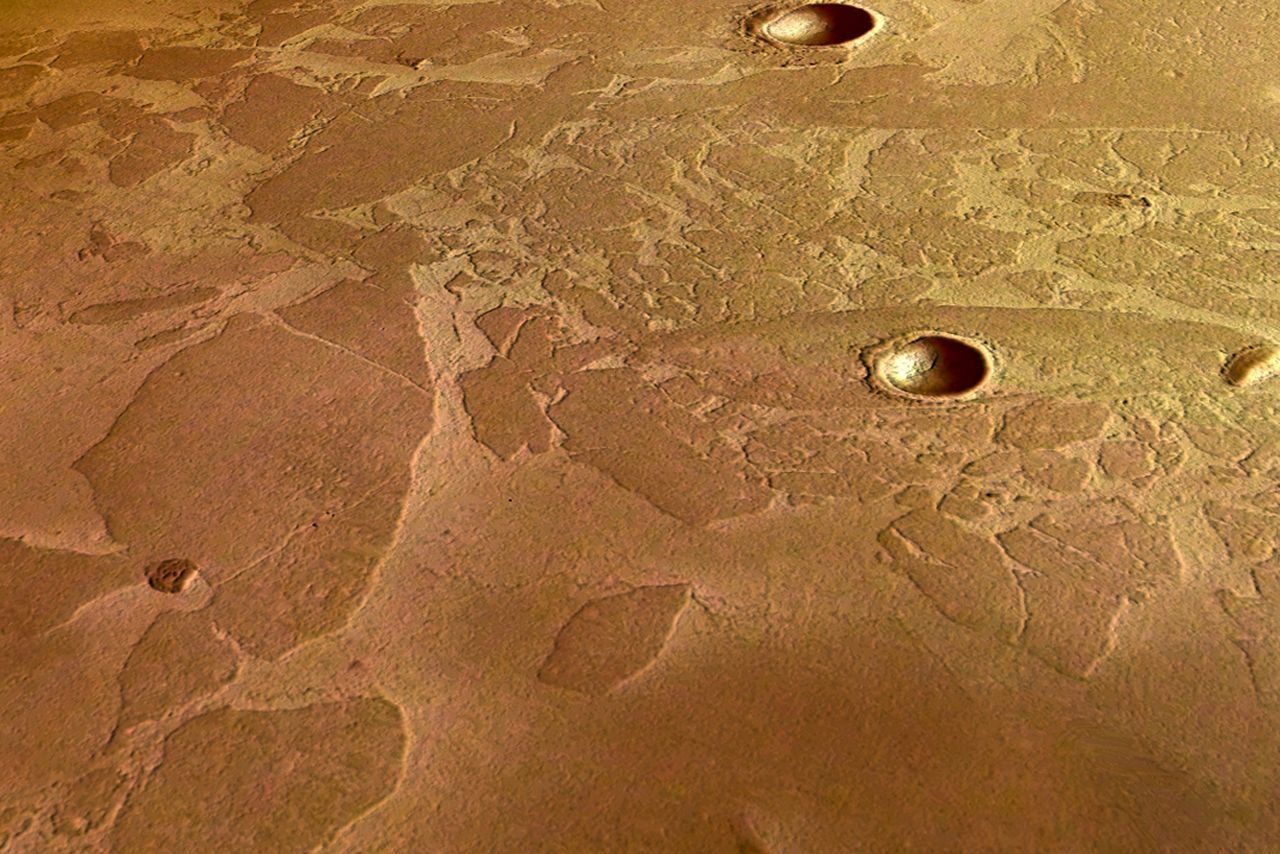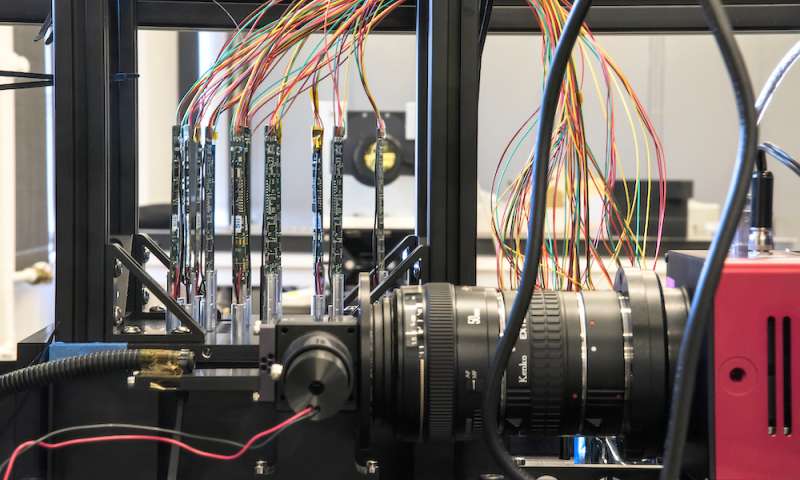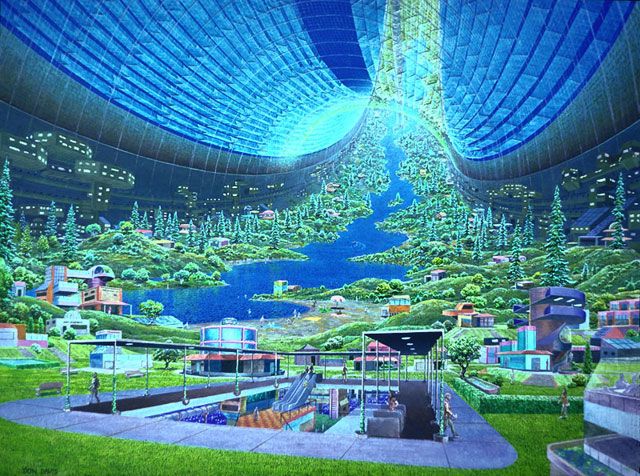Archive for the ‘space’ category: Page 951
Jun 14, 2016
Scientists found something extremely unexpected on Mars – and it could require us to rethink the planet’s history
Posted by Sean Brazell in category: space
Scientists at NASA’s Johnson Space Center found something very unexpected in a Martian crater.
Using the Curiosity Rover, the scientists detected a mineral called tridymite that, until now, they thought could only be created in extremely hot temperatures.
The discovery of this tridymite might rewrite the history of the planet, suggesting that it might once have been hotter than we previously thought, and home to monstrous volcanoes.
Jun 14, 2016
Amazing Photo Shows Likely Alien Planet 1,200 Light-Years Away
Posted by Sean Brazell in category: space
Mind = BLOWN
A jaw-dropping new photo shows a probable alien planet orbiting a star that lies 1,200 light-years from Earth.
The potential planet appears as a brownish dot to the left of the bright bluish-white star CVSO 30 in the newly released image, which was captured by the European Southern Observatory’s (ESO) Very Large Telescope in Chile.
Continue reading “Amazing Photo Shows Likely Alien Planet 1,200 Light-Years Away” »
Jun 13, 2016
U.S. and UAE Agree to Collaborate on Outer Space, Mars
Posted by Karen Hurst in categories: education, space
Very cool.
According to NASA’s statement on the agreement, it included a formal “Implementing Arrangement” that outlines Mars exploration as the first field of cooperation between the agencies and establishes a steering committee to identify areas of mutual interest.
NASA was contacted for further comment clarifying the nature of the UAE agreement, but had not responded at the time of this writing. The agreement also entails working as a team on education, technology, safety and mission assurance as well as aeronautics and other areas in which the countries can potentially benefit.
Continue reading “U.S. and UAE Agree to Collaborate on Outer Space, Mars” »
Jun 13, 2016
Researchers gear up galaxy-seeking robots for a test run — By Glenn Roberts Jr. | Phys.org
Posted by Odette Bohr Dienel in categories: cosmology, robotics/AI, science, space
“A prototype system, designed as a test for a planned array of 5,000 galaxy-seeking robots, is taking shape at the Department of Energy’s Lawrence Berkeley National Laboratory (Berkeley Lab).”
Jun 13, 2016
The obvious connection between 3D Printing and Space Colonization
Posted by Andreas Matt in categories: 3D printing, physics, space
Gerard K. O’Neill’s name might not ring a bell for many of us, but he certainly is one of the most significant names in the world of physics and space sciences. Gerard was an American physicist whose ideologies resonated with the concept of Space Manufacturing and Space Colonization as early as 1969.
He visualized establishment of a space manufacturing facility that would product end products for use in the outer space. Located in a very high orbit as compared to Earth, or on any celestial body, he claimed that the manufacturing facility would be self-sufficient and would be built entirely using materials available on celestial surfaces like lunar soil. When O’Neill presented his novel idea using research papers at different forums, he faced rejection and disapproval as every other world-changing idea did.
Continue reading “The obvious connection between 3D Printing and Space Colonization” »
Jun 11, 2016
MarsRunner: Video from the Mars Institute showing a running astronaut on Mars, based on Mars gravity simulations on Earth
Posted by Klaus Baldauf in category: space

A runner’s gait and stride on Mars will be very different from what they are on Earth. Mars spacesuit design based on design in book MISSION: MARS by Pascal Lee (Scholastic). Video created by VisCo. Produced by Mars Institute, Zaptec, & VisCo.
Jun 10, 2016
The World’s Oldest Computer May Have Been Used to Predict the Future
Posted by Sean Brazell in categories: computing, engineering, space
Discovered in an ancient shipwreck near Crete in 1901, the freakishly advanced Antikythera Mechanism has been called the world’s first computer. A decades-long investigation into the 2,000 year-old-device is shedding new light onto this mysterious device, including the revelation that it may have been used for more than just astronomy.
The Antikythera Mechanism is one of the most fascinating and important archaeological discoveries ever made, one that reveals the remarkable technological and engineering capacities of the ancient Greeks as well as their excellent grasp of astronomy. This clock-like assembly of bronze gears and displays was used to predict lunar and solar eclipses, along with the positions of the sun, moon, and planets. It wasn’t programmable in the modern sense, but it’s considered the world’s first analog computer. Dating to around 60 BC, nothing quite like it would appear for another millennium.
Jun 10, 2016
UChicago Physicists First to See Behavior of Quantum Materials in Curved Space
Posted by Karen Hurst in categories: computing, particle physics, quantum physics, space
Check this out!
UChicago hasthis been able for the first time conduct an experiment shows the behavior of quantum materials in curved space. In their own words, “We are beginning to make our photons interact with each other. This opens up many possibilities, such as making crystalline or exotic quantum liquid states of light. We can then see how they respond to spatial curvature.”
Interplay of light, matter is of potential technological interest
Continue reading “UChicago Physicists First to See Behavior of Quantum Materials in Curved Space” »
Jun 8, 2016
China Plans Oceanic ‘Space Station’ in South China Sea
Posted by Karen Hurst in categories: economics, military, space
(Bloomberg) — China is speeding up efforts to design and build a manned deep-sea platform to help it hunt for minerals in the South China Sea, one that may also serve a military purpose in the disputed waters.
Such an oceanic “space station” would be located as much as 3,000 meters (9,800 feet) below the surface, according to a recent Science Ministry presentation viewed by Bloomberg. The project was mentioned in China’s current five-year economic plan released in March and ranked number two on a list of the top 100 science and technology priorities.
Authorities recently examined the implementation of the project and decided to accelerate the process, according to the presentation.















